Nov 19, 2022
A brief history of microphones
“…acts for the ear much in the same way that the microscope serves the eye, hence its name”.
A brief history of microphones
By Hugh Robjohns
The humble microphone has been with us for well over a century and has come a long way from its crude beginnings. Identifying the inventor of the microphone is not a simple task, and depends very much on the definition used.
In the beginning
The German physicist Johann Philipp Reis (1834–1874) is a strong candidate for the title. His design for a ‘sound transmitter’ (optimised around 1861), used a metallic strip resting on a membrane with a metal point contact completing an electrical circuit. It was Reis’s theory that, as the membrane vibrated, the metal point bounced up and down ‘producing intermittent contact and thus a varying current synchronous with the vibrations’. He believed the height of the bounce and the force of its return caused variations in the amplitude of the current pulse proportional to the intensity of the sound. It worked in a fashion, but not really well enough for intelligible speech!
The next recorded attempt was that of Elisha Gray (1835–1901), an American inventor and one of the founders of what became the Western Electric Company. The Gray design was called a ‘liquid transmitter’ in which a diaphragm was attached to a moveable conductive rod immersed in an acidic solution. A second fixed rod alongside the first continued the circuit through the solution with a battery connecting the two. Sound pressure variations through the diaphragm caused the separation between the two rods to vary in proportion to the sound, producing corresponding changes in the electric resistance through the cell and, therefore, the amount of current flowing around the circuit.
On March 10, 1876, Alexander Graham Bell employed a very similar transmitter design for the first transmission of intelligible speech over a rudimentary telephone system – the famous request by Bell of his assistant: “Mr. Watson, come here. I want you”. However, the true inventor of the telephone was originally disputed since Bell filed his original patent application for the telephone on the same day that Gray also applied for a Caveat announcing his intention to claim the same invention (a caveat being a means of protecting an idea in advance of a full patent application). At this time, though, neither inventor had actually succeeded in transmitting speech over a telephone system at all! The complaint was that Bell’s first demonstrations of his telephone employed a ‘liquid transmitter’ of a kind previously developed and shown publicly by Gray – and not of the type documented in Bell’s patent application. However, the courts decided that, since Bell had filed his application several hours before Gray’s caveat, he should be awarded the patent.
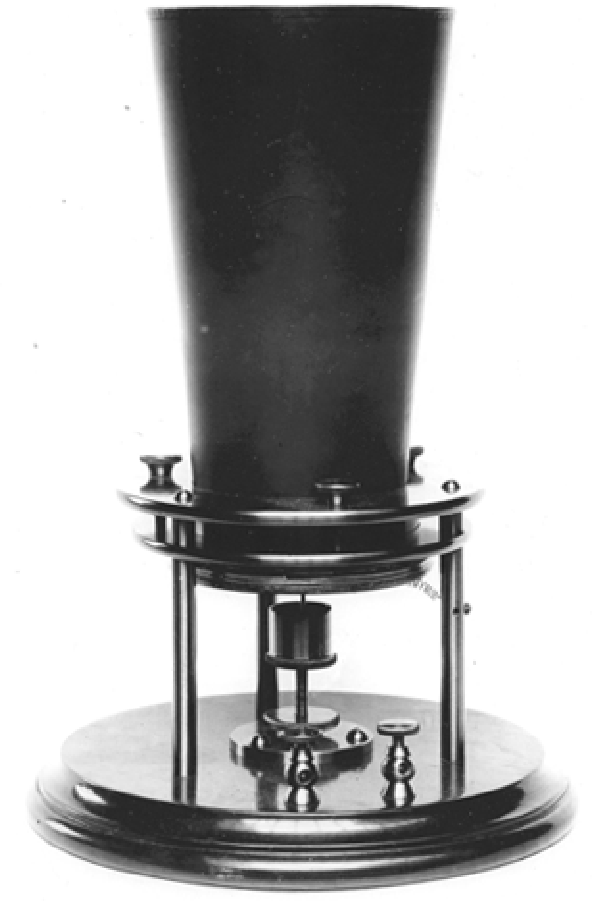
Bell’s original liquid transmitter microphone
The poor quality of these ‘liquid transmitters’ prompted a number of inventors to pursue alternative avenues of design – David Edward Hughes (1831–1900) was one such man. Already involved in the fledgling telegraph industry, he was granted a patent in 1855 for a type-printing telegraph instrument. His design became very successful in America and was widely adopted throughout Europe. By 1878, he had designed a new kind of microphone using carbon granules loosely packed in an enclosed space. In response to varying pressure from a sound diaphragm, the electrical resistance through the carbon granules changed proportionally. Although the performance of this kind of microphone is poor by today’s standards (inherently noisy with high distortion), it was a significant step forwards at the time and was the enabling technology for voice telephony.
The modern term ‘microphone’ also appears to have been coined by Hughes. He demonstrated his transmitter by mounting it on a sound box containing insects whose scratchings were then perceived to be ‘amplified’. Reports in the newspapers suggested that the device “…acts for the ear much in the same way that the microscope serves the eye, hence its name”.
Thomas Alva Edison (1847–1931) is well known for refining the carbon granule microphone, resulting in the carbon-button transmitter in 1886. This consisted of a cavity filled with granules of carbonised anthracite coal confined between two electrodes, one of which was attached to a thin iron diaphragm. Edison’s transmitter was simple and cheap to manufacture but also very efficient and durable, becoming the basis for the telephone transmitters used in millions of telephones around the world for the majority of the last century.
Recording and broadcasting developments
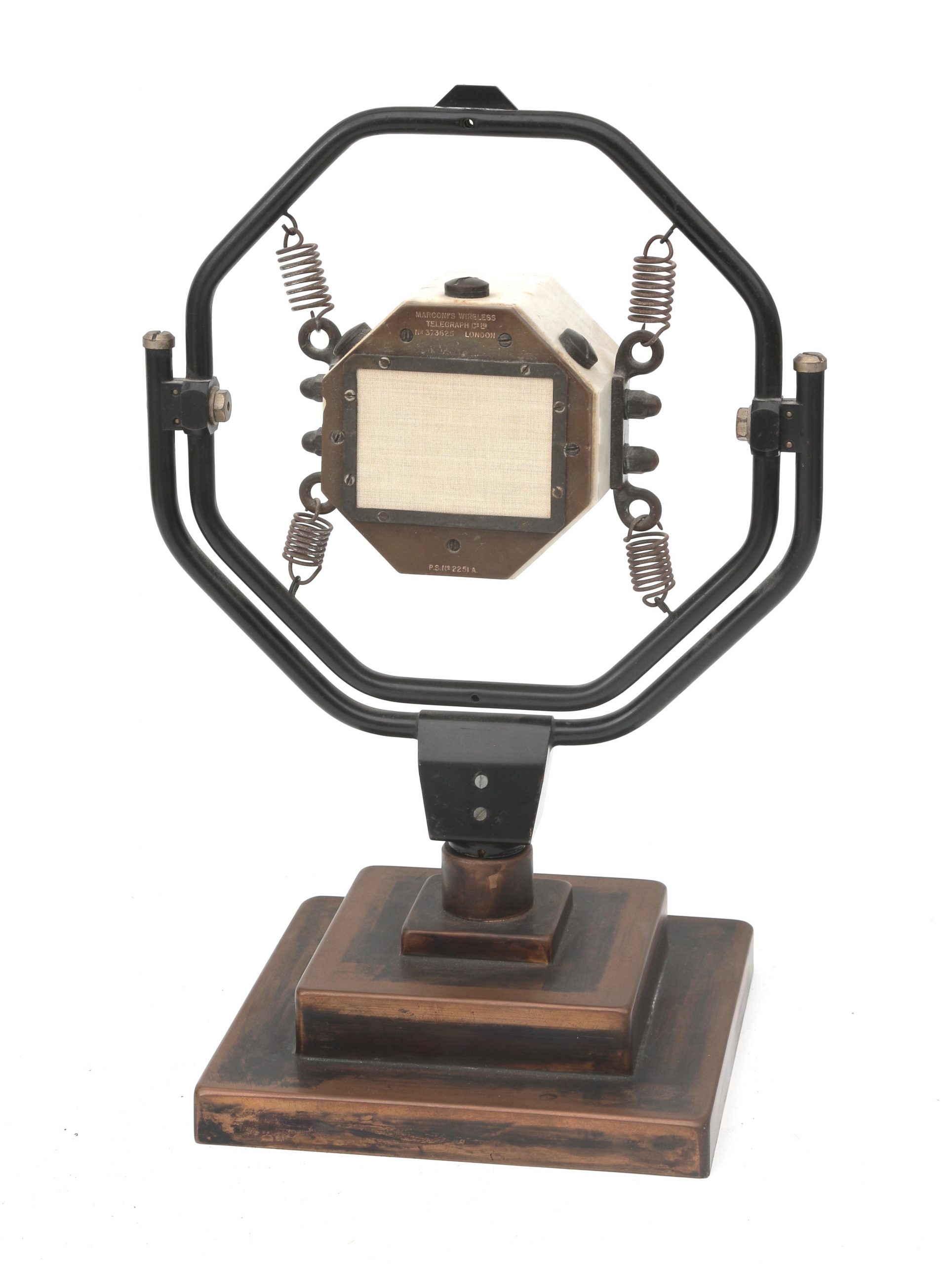
The advent of electrical disc recording and radio broadcasting in the early 1920s stimulated the development of better-quality carbon microphones. Perhaps the best known is an octagonal design often seen in photographs of the early broadcasting stations – the Marconi-Reisz ‘transverse-current’ carbon microphone. This was invented in Germany by a young employee of the Reisz company, Georg Neumann (who went on to manufacture microphones under his own name). In 1925 the Marconi-Reisz design was employed throughout the recently formed BBC, where it remained in daily use for over a decade.
However, the inherent instability problems of carbon granules provoked the search for better alternatives. One avenue was the piezoelectric (crystal) transducer, based on fundamental research by the Curies during the previous century. These transmitters originally used quartz or Rochelle salt crystals, but the sound quality was not particularly good. Today, piezoelectric foils in contact microphones use specialised ceramics with very respectable results.
The first capacitor microphone (and associated impedance converter/amplifier set) was developed by EC. Wente in 1917, based on work at Bell Laboratories in America. This was a laboratory sound intensity measurement tool, and it wasn’t until the early 1920s that precision stretched-diaphragm condenser microphones started to be manufactured for recording and broadcast applications. The thermionic valve (the “vacuum tube”, invented in 1907 by Lee de Forest) was a key factor in this, as capacitor microphones require impedance conversion impossible to achieve in any other practical way. Condenser microphones were employed, to a limited extent, in the BBC from 1926, but they had a reputation for being ‘temperamental’ due to their susceptibility to moisture causing ‘frying noises’!
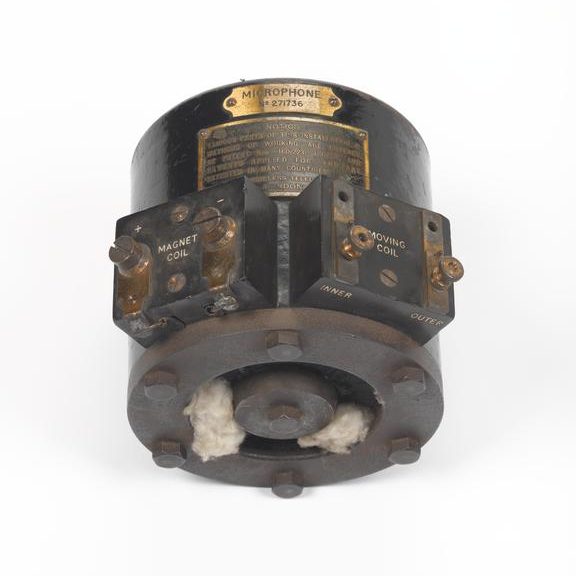
Electromagnetic microphones (moving coil, moving iron and ribbons) were relatively late on the scene because permanent magnets were very weak, and only electromagnets could create sufficient flux densities. As a consequence, the first moving coil microphones were very large and required power supplies! The Marconi-Sykes magetophone (developed from a patent by Sykes in 1920) was the first design to become popular and was adopted by the BBC in 1923, where it was known as the “Meat Safe”. It used a thin, flat, annular coil of aluminium as both diaphragm and motive coil, suspended on cotton wool. The magnetic field was created by a large electromagnet consuming around 4A from an 8V battery!
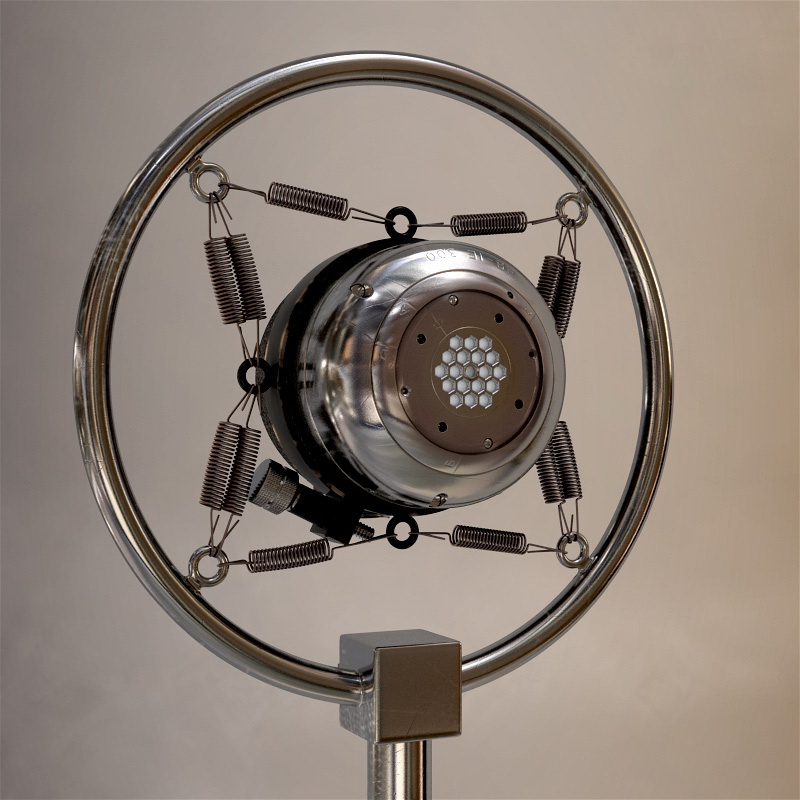
The renowned Alan Blumlein also worked on the design of a moving coil microphone to complement his electrical record-cutting systems when he was employed by the Columbia Graphophone Company (later to become EMI). He used a diaphragm made from a laminate of balsa wood (impregnated with celluloid) and thin sheets of aluminium foil. An anodised aluminium motive coil was riveted to the diaphragm, and, in his first tests, the electromagnet was powered by batteries borrowed from the cars of several colleagues! His first HB1A microphone (named after its two main inventors, Blumlein and Holman) was tested in November 1930 and compared directly with the Western Electric Condenser Transmitter (CT) microphone, the best standard of the day. After numerous revisions, including a screw tensioning system to adjust the diaphragm resonance, the result (the HB1B) was widely used in the EMI recording studios and by the new BBC television station at Alexandra Palace when it opened in 1936.

Blumlein’s HB1
The first ribbon microphone also appeared around 1930 and is believed to have been developed by Harry Olson, based on a modified ribbon loudspeaker (invented by E. Gerlach in 1924). Early designs were excessively large, heavy and cumbersome but were of a quality directly comparable to the condenser microphones of the time without being susceptible to moisture. The BBC/Marconi Type A ribbon microphone was introduced in 1935 and became the microphone of choice for the BBC’s radio services, although the EMI/Blumlein HB1B moving coil microphone (and its variants, the HB2, HB3 and HB4C) were preferred in the television service. This division was partly due to the relative prices of the two microphones: the Type A was considered inexpensive at £9, whereas the HB1B cost a whopping £40!
It wasn’t until powerful permanent magnets became available after the Second World War that the external dimensions of ribbon (and moving coil) microphones could be reduced. The earliest ribbon microphones employed relatively long, corrugated diaphragms, which were easily stretched and damaged by surprisingly small air currents (blowing on the diaphragm would destroy it). In 1958, Eugen Beyer changed all that with his introduction of the world’s first robust, ‘short diaphragm’ ribbon mic. Its capsule shared dimensions similar to the moving coil transducers of the time, and his original designs are still manufactured today.
The first carbon and condenser microphones were omnidirectional (pressure-operated) devices, whilst ribbons introduced pressure gradient operation when the diaphragm was exposed on both sides, with the resulting figure-of-eight polar response. However, RCA soon developed a cardioid pattern ribbon in which the upper part of the diaphragm was open on both sides (pressure gradient), but the rear of the lower part was enclosed (pressure operation).
An alternative approach, adopted by Western Electric and ST&C, employed a ribbon capsule (pressure gradient, figure-of-eight response) and a separate moving coil capsule (pressure operated, omni response) in the same unit. The diaphragms of the two capsules were in close proximity and their outputs combined electrically in series to produce a cardioid polar response. Although physically large, these designs were rugged and worked well, becoming the mainstay in early television sound boom rigs. Later a more practical way to create a cardioid response emerged: a single transducer with a rear phase-shifting acoustic network. This scheme was quickly adopted by the likes of Western Electric, Shure and Electrovoice in America, as well as Neumann, AKG, ST&C and others in Europe. The technique was developed further in Germany with the introduction of a dual-diaphragm condenser capsule. The outputs from the resulting pair of back-to-back cardioid capsules were combined electrically, and, by varying the capsule polarising voltages, a range of different polar responses could be obtained.
As the film and television industries developed, microphones with greater directionality were required to complement long focal-length camera lenses. The first attempts to increase directionality relied on crude interference techniques with multiple omnidirectional microphones fitted to large planar baffles. Later refinements included mounting an omnidirectional microphone at the focus of a parabolic reflector, but by the late 1930s, Western Electric and RCA had developed a more practical system. This used a long bundle of narrow-bore tubes mounted in front of, and perpendicular to, the plane of the diaphragm. For on-axis sounds, the tubes played no significant role as the soundwaves passed through them to arrive coherently at the diaphragm. However, off-axis sounds entered different tubes at varying distances from the diaphragm and, consequently, were largely incoherent when they arrived, so suffered a large amount of cancellation.
This technique was refined over the years resulting in the interference tube (shotgun) mics commonly used today, although, unfortunately, directionality at low frequencies remains a problem unless the interference tube is extremely long. 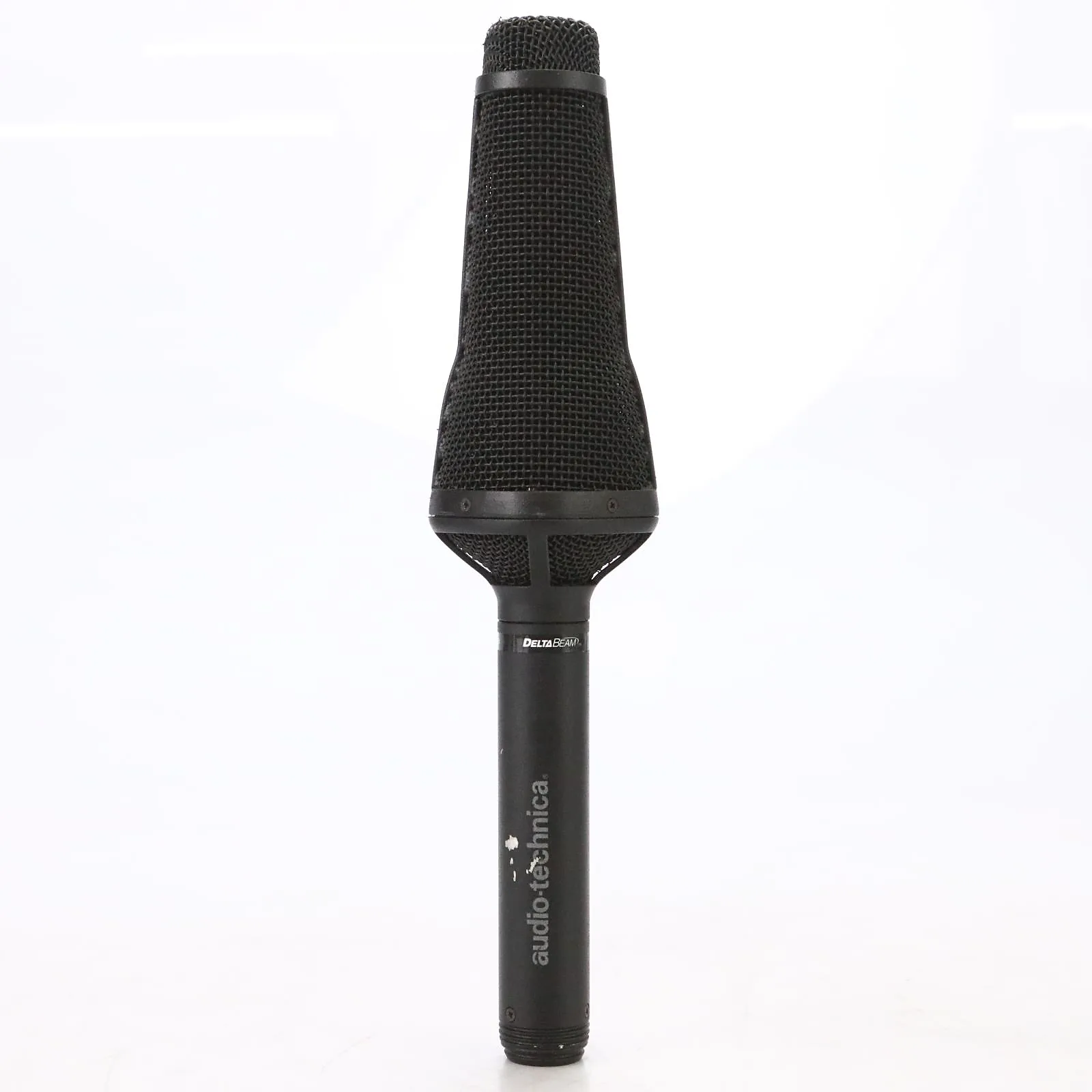 However, digital signal processing techniques, combined with a multiple capsule array, appear to provide one way forward, and Audio Technica has taken this approach with their inventive AT895 directional microphone.
However, digital signal processing techniques, combined with a multiple capsule array, appear to provide one way forward, and Audio Technica has taken this approach with their inventive AT895 directional microphone.
One of the problems plaguing early condenser microphones was their susceptibility to humidity. Essentially the capsule operates at very high impedance whereas the surrounding air, when damp, provides a low impedance path through which the polarising charge can escape, causing ‘frying noises’. In 1924, Riegger came up with the principle of the RF condenser microphone as a means of measuring sound pressure variations down to 0.1Hz. He used a capacitive microphone capsule in a low-impedance resonant circuit, excited by a radio frequency oscillator. Capacitance variations due to soundwaves caused corresponding changes to the resonant frequency, and demodulation of this varying RF signal provided the required audio frequency output.
This laboratory technique was improved by GF. Hull in 1946 and JJ. Zaalberg van Zelst in 1947, but it wasn’t until the early 1960s that it was applied to recording microphones. The impetus was to replace bulky valve impedance converters with much smaller transistorised circuits. Bipolar transistors are low-impedance devices, and although they couldn’t be employed with conventional condenser systems, they suited the RF condenser technique very well.  Sennheiser pioneered the technique for recording microphones and continues to manufacture a wide range of RF condenser microphones.
Sennheiser pioneered the technique for recording microphones and continues to manufacture a wide range of RF condenser microphones.
The miniaturisation of conventional condenser microphones had to wait until the Field Effect Transistor (FET) became available (with its extremely high input gate impedance) to replace valve impedance converters. Other attempts at miniaturisation have focused on the close integration of transducer and amplifying circuit, with many attempts dating back to the 1950s. In one early example, Olson coupled the diaphragm to a pivoted beam-electrode inside a thermionic valve, modulating the current flow directly according to the displacement of the diaphragm. Later, Sikorski used a diaphragm to vibrate a sapphire pin attached to the emitter region of a transistor, the induced mechanical stress affecting its conductivity. Rogers did a similar thing with a Tunnel Diode in the 1960s, and more recently, purpose-designed strain gauges have been used. For example, National Semiconductor manufacture a piezo-resistive silicon strain gauge constructed on a flexible substrate and claim a flat frequency response up to 20kHz (albeit with relatively low sensitivity).
The true capacitor microphone, once the champion of microphone quality, has been increasingly challenged by sophisticated pre-polarised (back-electret) capsules over the last twenty years. The well-known B&K (now DPA)4000 series microphones were amongst the first electrets to be accepted for quality recording applications, and AKG recently introduced their C4000 model – the world’s first multi-diaphragm, switched pattern pre-polarised microphone.
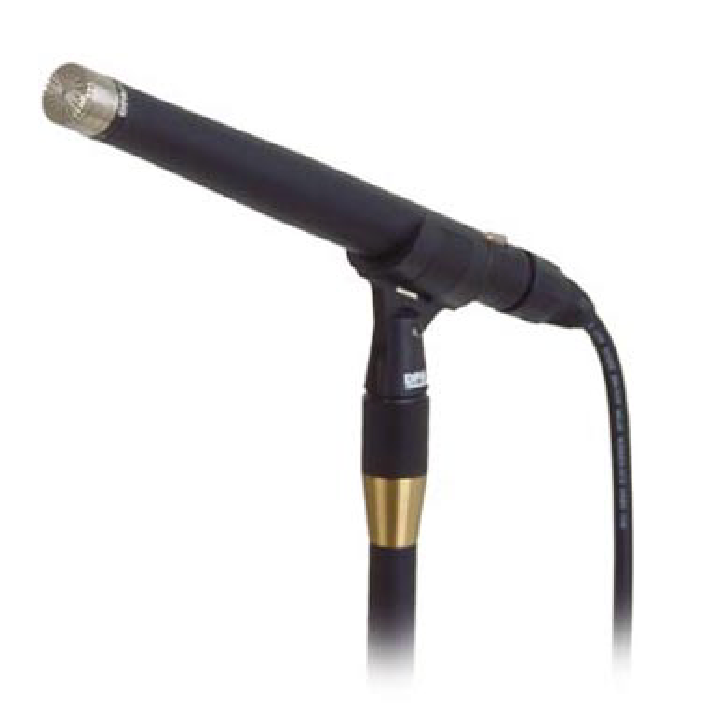
DPA’s 4003
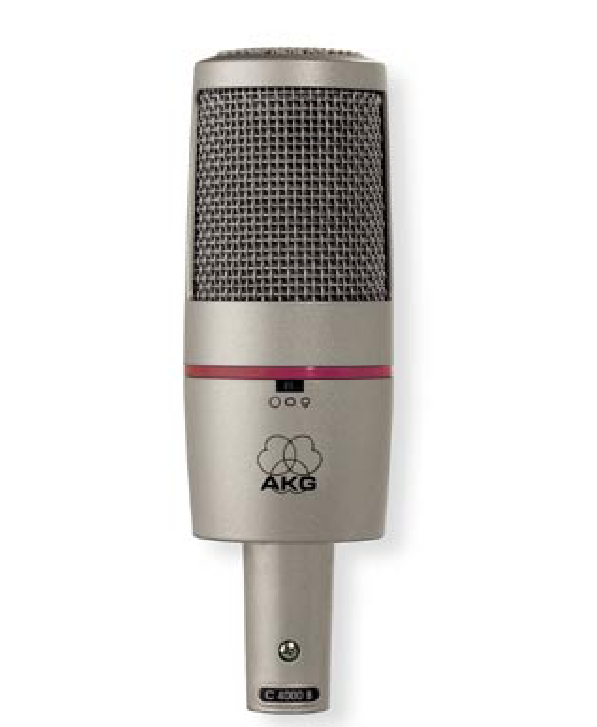
AKG’s C4000B
Innovations
The current interest in high sample-rate digital systems (96 and 192kHz, and the Sony DSD format) has encouraged microphone manufacturers to market microphones designed to take advantage of this new fidelity. Sony’s C2 three-capsule microphone has a claimed bandwidth of 100kHz and has been used on some DSD recordings, whilst Sennheiser has a reworked version of their highly regarded MKH80 RF condenser microphone – the new MKH800 – which is claimed to provide a flat response to over 50kHz. Many of the Earthworks microphones also have a response extending to over 40kHz.
One of the most important innovations of microphone design was the Soundfield capsule, originally conceived and developed in the 1970s to originate ambisonic surround sound material – a technique developed by Michael Gerzon (Mathematical Institute in Oxford) and Professor P. B. Fellgett (University of Reading). The underlying concepts of ambisonics are relatively simple (and derive logically from the coincident stereo investigations of Blumlein forty years earlier), although their implementation is extremely complex and highly mathematical.
The Soundfield microphone comprises four sub-cardioid capacitor capsules in a tetrahedral array, producing ‘A-format’ signals. These are combined electronically (with compensation for the physical separation between capsules) to produce ‘B-format’ signals which are the basis of ‘UHJ Ambisonic’ encoded material. These signals represent the outputs of four (perfect) virtual microphones consisting of three mutually perpendicular figure-of-eight elements – left/right (X), front/back (Y) and up/down (Z), plus an omnidirectional component (W). These can be thought of as three-dimensional extensions to Blumlein’s original MS configuration. An Ambisonics decoder calculates which combinations of B-format signals to route to which loudspeakers (‘D-format’ signals), given information about their number and approximate location and how to process them to create incredibly stable and accurate surround-sound images.
The further development in Soundfield Technology was a specialised decoder generating a 5.1-channel compatible output from the Soundifled microphone (or other “B-format” sources). One application is to enable a Soundfield microphone to generate actual surround sound on location, or in a foley studio, for feature film production. The decoder is effectively preset to produce five loudspeaker outputs corresponding to the locations of a conventional 5.1 speaker array – an arrangement known as the ‘G-format’.
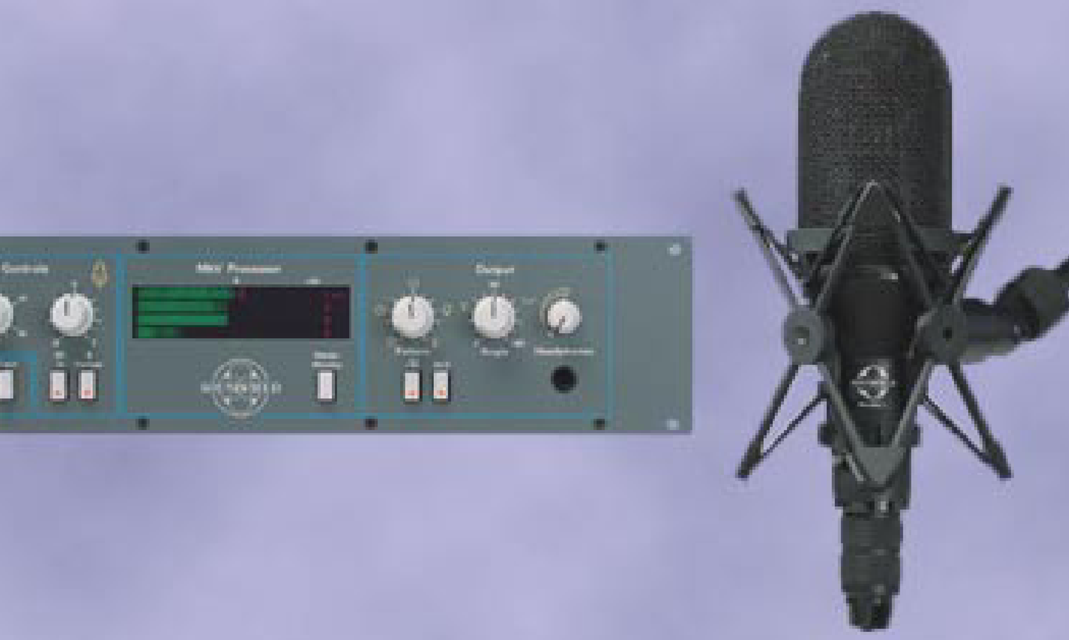
Soundfield’s MKV
At the time of writing, the best of the conventional microphone designs comfortably out-strip analogue preamplifiers in terms of noise and dynamic range, and both have significantly better performance than digital converters.
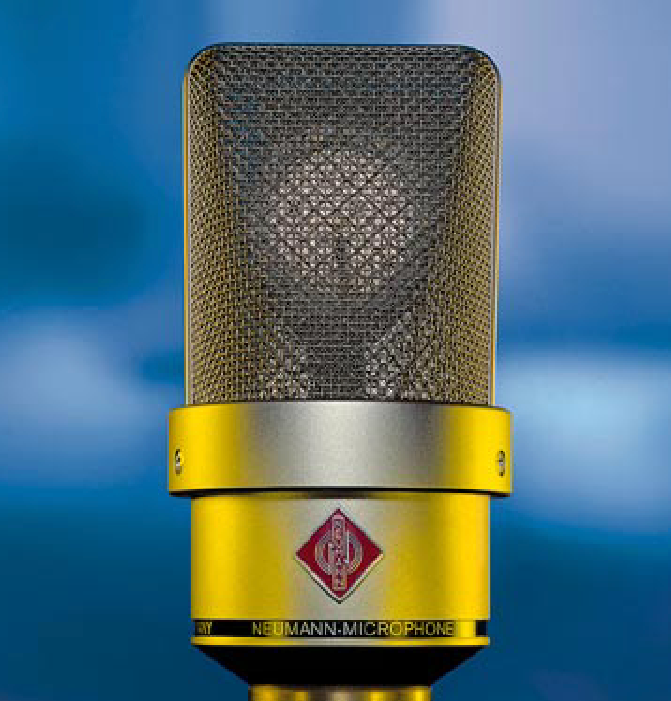
Neumann’s TLM103
The Neumann TLM103 condenser microphone has a self-noise figure of just 7dBA, for example, and a dynamic range of 131dB. However, digital technology and sophisticated conversion techniques continue to improve, and electromechanical transducers will probably be replaced by optomechanical devices.
The future
In recent years, some of the more radical approaches to microphone design have included detecting the movement in response to sound pressure variations of charged particles – a system analogous to the ionic loudspeaker. Another idea is the laser-velocity transducer, where a vibrating reflective surface is scanned by a low-power laser, the resulting Doppler shift conveying the audio signal, and over the last decade research into ‘optical microphones’ has started to bear fruit. Laboratory systems have been in use for some time but are too unwieldy for practical recording microphone systems. Sennheiser has developed a compact optical microphone for use in gas pumping stations to detect the sound of leaks without the risk of explosion potentially caused by biasing voltages of traditional microphones. Development is continuing in the hope of using the technique in theatrical applications where typical electret capsules rapidly suffer damage from the effects of artist make-up and perspiration! However, miniature optical interfaces and related devices developed for the telecommunications industries, such as miniature laser diodes, polarising beam splitters and photodiodes, are now enabling the construction of high-quality optical microphones. At present, using conventional interferometry techniques and low-power lasers, the achievable dynamic range is typically a little less than that of a conventional microphone, and the distortion is rather worse, but self-noise is inherently lower. Research in providing a direct digital output by opto-sensing the amount of movement of different parts of the diaphragm is also widespread, although the resolution appears extremely limited with present technologies.
Perhaps a more promising approach is to use ‘force feedback’ in conjunction with an optical microphone. An optical interferometry technique detects the movement of the diaphragm (of a capacitive capsule) in response to sound pressure variations. A feedback circuit applies a voltage to the capsule creating an electrostatic force opposing the movement – the effort required being proportional to the sound depending on the design of the circuitry. Although maximum sound pressure levels in excess of 135dB can be accommodated and the frequency response of the system is dictated entirely by the feedback electronics, this technique is, unfortunately, considered too expensive to be marketable at present.
Hugh Robjohns was a lecturer at the BBC‘s Wood Norton training establishments for many years. Now a technical author and consultant, he contributes to many technical publications and is the Technical Editor of Sound on Sound and Editor of LineUp, the journal of the Institute of Broadcast Sound.
First published Microphone Data Book 2001
© 2022 Micpedia
